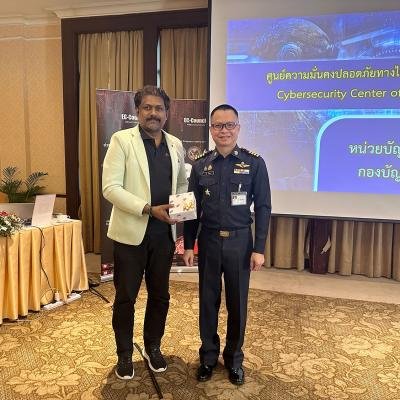Introduction: A New Front in Cyber Warfare
Cyber warfare has become one of the defining weapons of the 21st century, where state-backed threat actors no longer rely solely on military force but instead target the digital backbone of their adversaries. Nowhere is this more evident than in Ukraine, a country that has been a consistent target of cyberattacks since the onset of conflict with Russia.
The latest digital threat to emerge is PathWiper, a destructive data-wiping malware recently identified by Cisco Talos. This malware is designed not to steal data or demand ransom, but to completely destroy systems, rendering them unusable. And while this attack was aimed at a Ukrainian critical infrastructure entity, its implications extend far beyond Ukraine's borders.
If a critical infrastructure organization with defense-grade cybersecurity can be breached, what does that mean for private companies, SMBs, or even governments in other regions?
What Makes PathWiper So Dangerous?
The PathWiper attack was carried out using a legitimate endpoint administration tool, which was hijacked to deliver the malicious payload. This approach bypassed many traditional security checks and gave the attackers elevated access to the system.
Once inside, the attackers executed a Visual Basic script (uacinstall.vbs) through the compromised console. This script dropped a binary file named sha256sum.exe, which was not used for hashing purposes, but for one mission: destruction.The malware proceeded to overwrite critical disk components such as the Master Boot Record (MBR) and NTFS file structures, effectively bricking the system.
There was no attempt at ransom or exfiltration. This was a pure denial-of-operations attack, aimed at inflicting maximum damage with minimum visibility.
A Familiar Pattern: How PathWiper Mirrors Previous Attacks
Although PathWiper is new, its tactics echo previous destructive malware campaigns targeting Ukraine. Most notably, HermeticWiper and NotPetya come to mind—both believed to be tied to Russian state-sponsored threat actors.
In 2017, NotPetya initially masqueraded as ransomware but was later confirmed to be a data wiper. It spread globally, causing an estimated $10 billion in damages and crippling logistics, healthcare, and financial institutions. Similarly, HermeticWiper in 2024 targeted Ukrainian government and telecom agencies just before a major Russian military escalation. PathWiper appears to follow in their footsteps, using different file corruption techniques but ultimately sharing the same goal: irreversible data destruction. This continuity suggests that APT (Advanced Persistent Threat)
groups continue to prioritize sabotage over espionage, especially in geopolitical hotspots.
The Bigger Picture: Destructive Malware on the Rise
According to IBM’s X-Force Threat Intelligence Index 2024, there’s been a 67% increase in attacks targeting critical infrastructure globally. Furthermore, incidents involving wiper malware have surged by over 200% since 2022, making them one of the fastest-growing cyber threats.
These attacks are not just targeting governments or utilities. Any organization with digital operations and high uptime requirements—such as hospitals, banks, transportation networks, and cloud providers—is at risk.
What’s even more alarming is that the tools and tactics used in state-sponsored campaigns often leak into criminal forums. Today’s nation-state exploit could easily become tomorrow’s ransomware toolkit in the hands of financially motivated hackers
Other Active Threat Actors to Watch
The cyber battlefield is not limited to just one group. Several other threat actors are engaged in destructive campaigns, further widening the risk landscape.
One such group is Silent Werewolf, a less-publicized but highly active actor responsible for attacks on Russian and Moldovan firms. Their malware of choice, XDigo, is often delivered via phishing emails and includesfunctionalities such as credential theft, keylogging, and remote access capabilities. What makes XDigo especially dangerous is its ability to evade detection using large language model (LLM)-based checks, bypassing 83% of traditional AV systems according to recent testing by SentinelOne.
Meanwhile, on the other end of the geopolitical spectrum, pro-Ukrainian hacktivists known as the BO Team have been actively attacking Russian infrastructure. Using repurposed ransomware codebases like DarkGate and Babuk, they’ve launched campaigns aimed at disrupting supply chains, transportation, and internal communications.
This dual-front threat landscape—state actors and hacktivists alike—makes it clear that destructive malware is no longer just a nation-state problem. It's a global cybersecurity emergency.
Lessons from the PathWiper Attack
The PathWiper campaign carries critical lessons for cybersecurity professionals and organizational leaders alike.
1. Legitimate Tools Are Being Weaponized
PathWiper’s use of a standard admin console highlights a troubling trend: attackers are turning everyday IT tools into vectors of destruction. This makes them harder to detect and block, as they mimic normal behavior.
2. Flat Networks Invite Catastrophe
Without proper network segmentation, a single compromised endpoint can grant attackers access to an entire digital environment. Adopting Zero Trust principles and enforcing microsegmentation are non-negotiable strategies in today’s landscape.
3. Behavioral Monitoring Is More Effective Than Signature-Based Detection
Modern malware is designed to change its appearance constantly. Signature-based antivirus tools are too slow and too limited. Instead, organizations should invest in EDR (Endpoint Detection and Response) and XDR (Extended Detection and Response) platforms that use machine learning to detect anomalies.
4. Backups Must Be Immutable and Isolated
Attackers are increasingly targeting backup systems to ensure total destruction. Secure backups must be:
- Air-gapped from main systems
- Regularly tested
- Configured to prevent deletion or overwriting
5. Employee Training Is Still a Powerful Defense
Phishing remains a top vector for malware delivery. Organizations that conduct routine security awareness training reduce employee click-through rates by as much as 70%, according to KnowBe4’s 2024 report.
The Digialert Perspective
At Digialert, we view the PathWiper incident not just as another malware case but as a signal flare for industries worldwide. The stakes have changed. Organizations can no longer afford to think of ransomware, phishing, or data breaches as separate concerns. Today’s attackers aim to destroy infrastructure—not monetize it.
“Wiper attacks are a stark reminder that cyber defenses must evolve beyond ransomware preparedness. Real-time threat intelligence and endpoint resilience are non-negotiable for critical sectors.”
That’s why Digialert emphasizes a layered defense strategy:
- Real-time Threat Intelligence to track evolving malware trends
- 24/7 SOC Monitoring for rapid anomaly detection
- Red Team Exercises to simulate real-world attack scenarios
- Incident Response Playbooks tailored for destructive malware events
Our goal is simple: help organizations survive the first hit—and respond before the second one lands.
Are You Ready for a PathWiper Scenario?
PathWiper may have targeted Ukraine, but its message is global: no system is safe unless it's proactively defended. Every business—from cloud services to healthcare providers—must ask the tough questions:
- Can we detect a wiper before it executes?
- Are our systems segmented to contain the blast radius?
- Is our incident response plan ready for a scenario involving total data loss?
If you can’t confidently say “yes,” then the time to act is now.
Follow for More Cybersecurity Insights
Stay ahead of the threat curve with actionable insights from Digialert.
- Follow Digialert on LinkedIn
- Connect with VinodSenthil for expert security strategy updates







